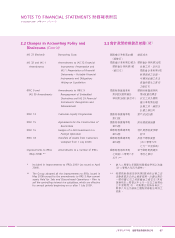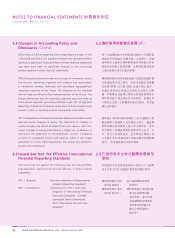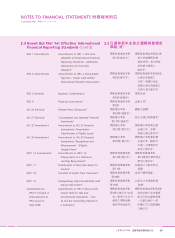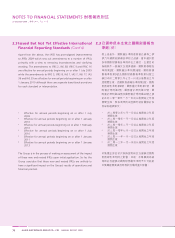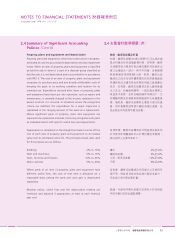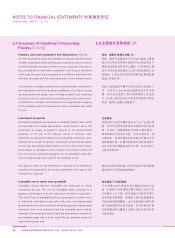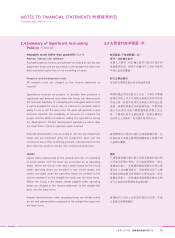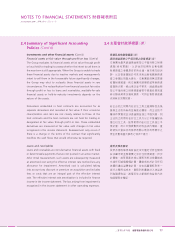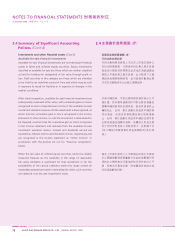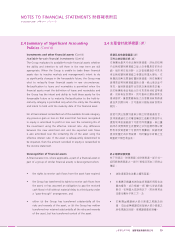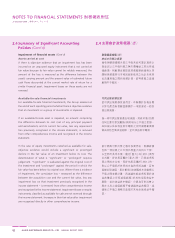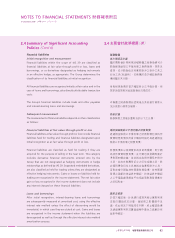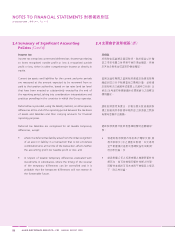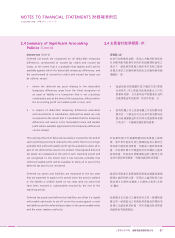Haier 2009 Annual Report Download - page 79
Download and view the complete annual report
Please find page 79 of the 2009 Haier annual report below. You can navigate through the pages in the report by either clicking on the pages listed below, or by using the keyword search tool below to find specific information within the annual report.
31 December 2009
NOTES TO FINANCIAL STATEMENTS 財務報表附註
海爾電器集團有限公司 77
2.4 Summary of Significant Accounting
Policies (Cont’d)
Investments and other financial assets (Cont’d)
Financial assets at fair value through profit or loss (Cont’d)
The Group evaluates its financial assets at fair value through profit
or loss (held for trading) to assess whether the intent to sell them in
the near term is still appropriate. When the Group is unable to trade
these financial assets due to inactive markets and management’s
intent to sell them in the foreseeable future significantly changes,
the Group may elect to reclassify these financial assets in rare
circumstances. The reclassification from financial assets at fair value
through profit or loss to loans and receivables, available-for-sale
financial assets or held-to-maturity investments depends on the
nature of the assets.
Derivatives embedded in host contracts are accounted for as
separate derivatives and recorded at fair value if their economic
characteristics and risks are not closely related to those of the
host contracts and the host contracts are not held for trading or
designated at fair value through profit or loss. These embedded
derivatives are measured at fair value with changes in fair value
recognised in the income statement. Reassessment only occurs if
there is a change in the terms of the contract that significantly
modifies the cash flows that would otherwise be required.
Loans and receivables
Loans and receivables are non-derivative financial assets with fixed
or determinable payments that are not quoted in an active market.
After initial measurement, such assets are subsequently measured
at amortised cost using the effective interest rate method less any
allowance for impairment. Amortised cost is calculated taking
into account any discount or premium on acquisition and includes
fees or costs that are an integral part of the effective interest
rate. The effective interest rate amortisation is included in finance
income in the income statement. The loss arising from impairment is
recognised in the income statement in other operating expenses.
2.4
透過損益賬按公平值列賬之財務資產
貸款及應收賬項


